Building a CAC-Only Set of Charlotte Mint Half Eagles
A set of CAC approved Charlotte Mint, Liberty Head half eagles that is more than three-fourths complete would be a cool, satisfying and important achievement.

An example of an 1843-C half eagle minted in Charlotte, North Carolina
Recently, I have been analyzing CAC-only sets that are practical to build. It may be exciting, however, for a collector to attempt to build an impractical and difficult CAC-only set. A set of CAC approved Charlotte Mint, Liberty Head half eagles that is more than three-fourths complete would be a cool, satisfying and important achievement. Even a totally (100%) complete CAC-only set is not as difficult nor as as expensive a task as it may seem at the onset. Time and patience are required.
Liberty Head half eagles were struck in Charlotte from 1839 to around the time of the outbreak of the U.S. Civil War in 1861. Classic Head half eagles are not part of this discussion, though there was one issue of Classic Head half eagles at the Charlotte Mint, in 1838.
The Charlotte, Dahlonega and New Orleans Mints were established in 1838. From 1793 to 1837, all U.S. coins were minted in Philadelphia.
I am focusing on Charlotte Mint coins now rather than Dahlonega Mint coins. One reason is that Dahlonega Mint coins seem to have attracted much more attention from coin collectors over the past thirty years. Charlotte Mint coins deserve more attention than they have been receiving.
The building of a set of Charlotte Mint half eagles would certainly be a challenge, with or without CAC stickers. Furthermore, a collector who seeks only CAC approved Charlotte or Dahlonega Mint coins would not have to tolerate some of the very ‘washed’ appearing and chemically influenced pieces that failed to receive a CAC stickers, many of which bring tears to my eyes.
Gold coins from the Charlotte and Dahlonega Mints were not saved by many collectors in the middle of the 19th century. Survivors in the present tend to have problems.
People collecting coins during the 1840s and 1850s generally sought coins that were minted much earlier. Charlotte and Dahlonega coins were usually spent rather than collected especially in regions where there was a shortage of circulating coins.

An example of an 1860-C half eagle graded NGC AU50 with CAC approval.
Before 1860, most of the people who did collect coins soon after they were minted would somehow or another obtain attractive representatives of the coins of the Philadelphia Mint. Mintmarked dates were not popular among coin collectors during the middle of the 19th century.
Southern gold coins were roughed up in commerce or accidentally mistreated by people who were not coin experts, and were never plentiful from the beginning. Few really appealing coins survive. More recently, many have been polished, cleaned and/or artificially brightened to be marketed to inexperienced collectors or to non-collectors as historical relics. Certainly, they are of historical importance as they relate to important events in the South.
Since CAC was founded in 2007, a small number of Charlotte Mint coins have been approved. The following are CAC populations of Charlotte Mint, Liberty Head, half eagles:
1839 (6), 1840 (16), 1841 (21), 1842 ‘Small Date’ (10), 1842 ‘Large Date’ (12), 1843 (25), 1844 (13), 1846 (13), 1847 (46), 1848 (40), 1849 (40), 1850 (24), 1851 (18), 1852 (39), 1853 (24), 1854 (10), 1855 (14), 1856 (17), 1857 (20), 1858 (29), 1859 (16), 1860 (15), 1861 (13)
These totals may include multiple counts of a few coins, especially of coins that received different PCGS or NGC serial numbers after wholesalers failed to upgrade them.
All have a ‘C’ mintmark on the reverse (back of the coin). For the 1850 and the 1854, a distinction is often made between a normal ‘C’ mintmark and a “Weak C,” which is faint. As decent Charlotte Mint coins are so rare anyway, this is not a leading issue. Surface quality is far more important, and interested collectors should be glad to find any 1850-C or 1854-C half eagle.
If the overall rarity and historical importance of Charlotte Mint half eagles are considered, market levels are reasonable from a logical perspective. There are many large cents, Mercury dimes, Walking Liberty half dollars, and Morgan dollars that cost far more. There are even generic gold coins, particularly CAC approved, PCGS or NGC graded MS67 coins that cost much more than most of the rare Charlotte Mint half eagles that are cited herein.
As each coin is different and a multitude of factors affect auction results, prices realized should not be interpreted as precise market values. Prices realized are cited to demonstrate that CAC approved, Charlotte Mint coins of almost all dates are available and are not extremely expensive. Before embarking upon a collecting quest, it is a good idea to have an idea of the costs involved and time required. It is also important to keep in mind that many coins are sold privately. Every year, some Charlotte Mint coins trade in a quiet manner.
Ten years ago, Heritage auctioned a PCGS graded XF45 1839-C, with a CAC sticker, for $3,960. On August 7, 2018, Stack’s-Bowers auctioned a PCGS graded VF25 1840-C, with a CAC sticker, for $2,520. In February 2018, Heritage auctioned an NGC graded VF30 1841-C, with a CAC sticker, for $1,980.
On November 15, 2019, Stack’s-Bowers auctioned a PCGS graded XF45 1842-C ‘Large Date’ half eagle, with a CAC sticker, for $3,600. In December 2017, Heritage auctioned a PCGS graded VF30 ‘Small Date’ 1842-C, with a CAC sticker, for $9,002.40.
In April 2019, Heritage auctioned an NGC graded XF40 1843-C, with a CAC sticker, for $2,160. In February 2019, Heritage auctioned an NGC graded VF35 1844-C, with a CAC sticker, of this same price, $2,160.
It has been a while since a CAC approved 1846-C has been in a major auction. In January 2015, Heritage sold a CAC approved VF35 grade 1846-C for $3,290.
In December 2019, Heritage sold an NGC graded MS60 1847-C, with a CAC sticker, for $7,802.40. In April 2017, Heritage auctioned a PCGS graded MS64 1848-C, with a CAC sticker, for $52,875. Over the last ten years, Heritage and Stack’s-Bowers have sold circulated, CAC approved 1848-C half eagles for prices in between $1,500 and $7,000.
On March 8, 2020, Heritage sold an NGC graded AU55 1849-C, with a CAC sticker, for $3,600. On August 14, 2019, Stack’s-Bowers auctioned an NGC graded AU58 1849-C, with a CAC sticker, for $6,600. In August 2018, Stack’s-Bowers auctioned a PCGS graded XF40 1849-C, with a CAC sticker, for $2,160. In February 2018, Heritage auctioned a different PCGS graded XF40 1849-C, with a CAC sticker, for this same price, $2,160.
In September 2019, the Goldbergs auctioned a PCGS graded AU53 1850-C, with a CAC sticker, for $3,240. The 1851-C is certainly a rarity. Finding a CAC approved 1851-C might be very difficult. On March 20, 2017, Stack’s-Bowers auctioned a PCGS graded AU55 1851-C, with a CAC sticker, for $8,812.50.
On August 12, 2018, DLRC sold a PCGS graded XF45 1852-C, with a CAC sticker, for $2,450. Over the last ten years, there have been dozens of instances of 1853-C half eagles being publicly offered, but less than five of them had CAC stickers. On March 30, 2017, Stack’s-Bowers auctioned a PCGS graded AU55 1853-C, with a CAC sticker, for $4,700.
Public appearances of CAC approved 1854-C half eagles have been even rarer than appearances of CAC approved 1853-C half eagles. In June 2016, Heritage auctioned a PCGS graded XF45 1854-C, with a CAC sticker, for $3,525. Heritage had earlier auctioned the exact same coin for $2,530 in February 2007, before CAC was founded later that year.
In February 2017, Stack’s-Bowers sold a PCGS graded AU50 1855-C with a CAC sticker for $3,525. On August 13, 2019, Stack’s-Bowers auctioned a PCGS graded AU53 1856-C with a CAC sticker for $4,080.
In November 2017, Heritage auctioned a PCGS graded XF40 1857-C with a CAC sticker for $2,040. On August 13, 2019, Stack’s-Bowers auctioned a PCGS graded AU50 1858-C with a CAC sticker for $3,480. On August 17, 2018, Stack’s-Bowers auctioned a PCGS graded XF40 1859-C with a CAC sticker for $3,480.
CAC has approved just fifteen 1860-C half eagles. These are elusive. In June 2015, Heritage auctioned an NGC graded AU50 1860-C, with a CAC sticker, for $3,525. In August 2012, Stack’s-Bowers auctioned an NGC graded MS64 1860-C, with a CAC sticker, for $47,000.
The 1861-C and the 1842-C ‘Small Date’ are the key Charlotte Mint half eagles. The 1861-C is also demanded by collectors who focus on the period of the U.S. Civil War. With or without CAC stickers, 1861-C half eagles are very expensive. Although CAC approved 1861-C half eagles are rarely auctioned, they are around. They are on ‘want lists’ that collectors supply to dealers and consultants. It is best for a collector to seek expert advice before acquiring an 1861-C or an 1842-C ‘Small Date.’
While certified grades and other opinions of individual coins often change over time, Charlotte Mint half eagles will always be rare, historically important and fascinating. A CAC-only set of Charlotte Mint half eagles would attract much attention as an auction consignment or as a public exhibit at a coin convention.
©2020 Greg Reynolds
Insightful10@gmail.com

Download the Greysheet app for access to pricing, news, events and your subscriptions.
Subscribe Now.
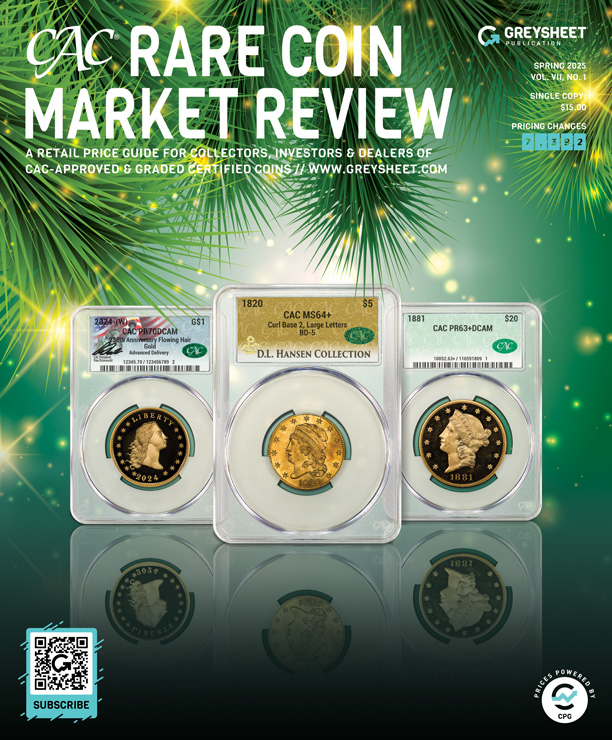
Subscribe to CAC Rare Coin Market Review for the industry's most respected pricing and to read more articles just like this.
Source: Greg Reynolds
Related Stories (powered by Greysheet News)
View all news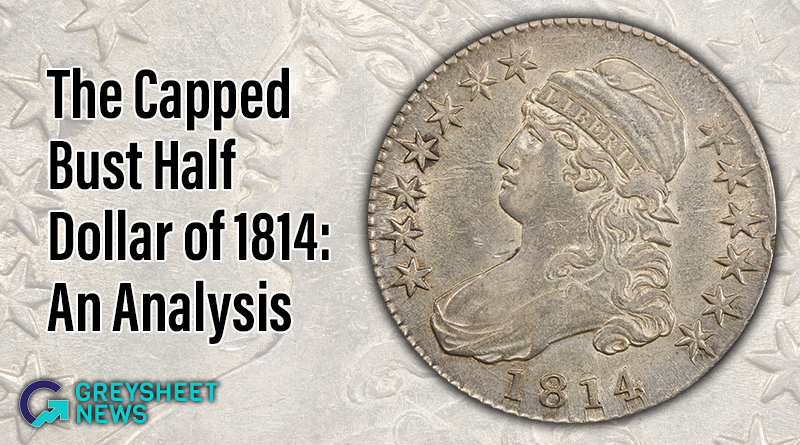
In this article Greg Reynolds analyzes the 1814 Capped Bust Half Dollar.
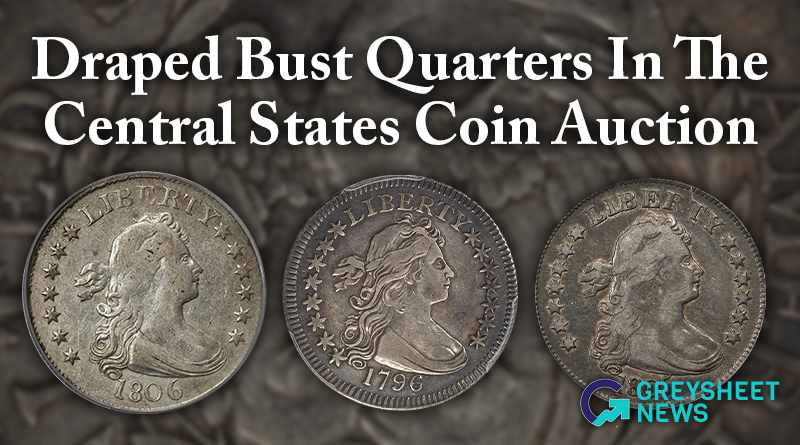
The Lusk set of Draped Bust quarters brought strong results.
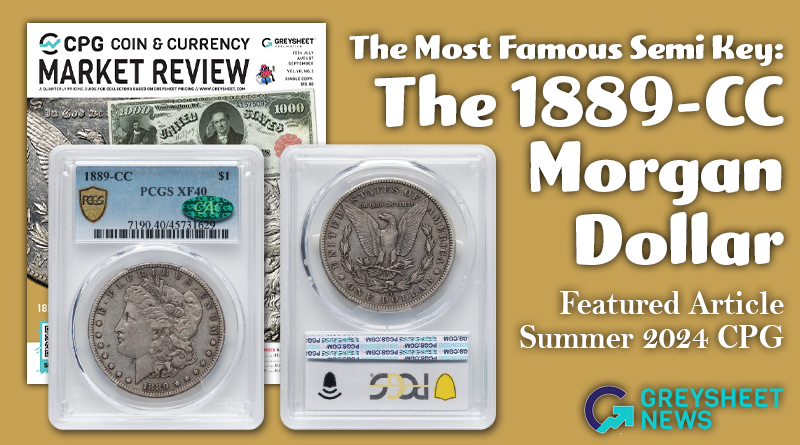
The 1889-CC is the second scarcest business strike in the series.


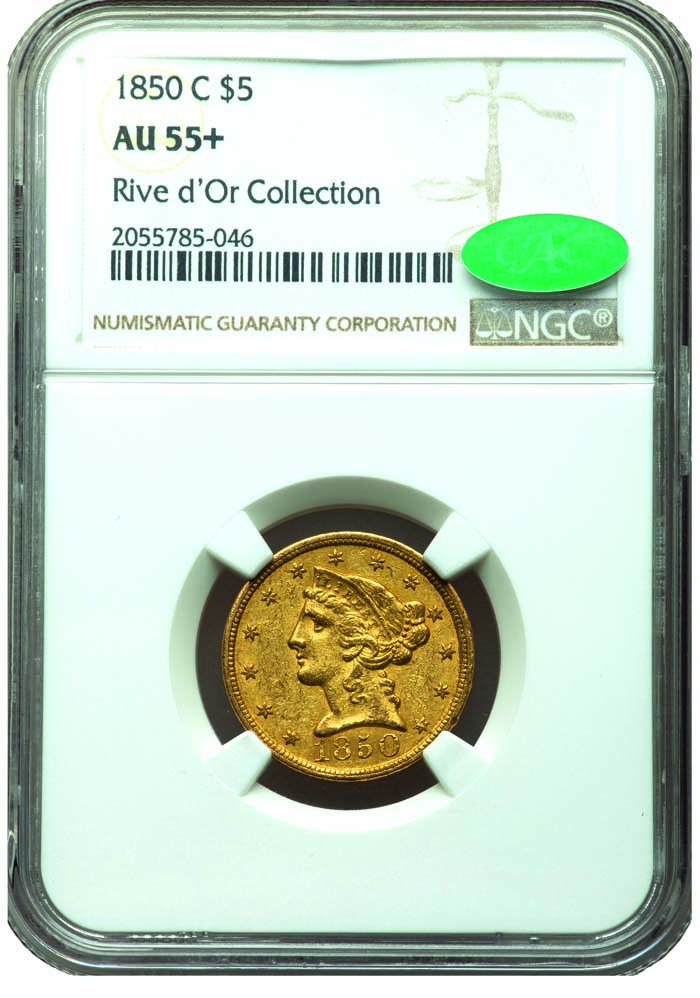






Please sign in or register to leave a comment.
Your identity will be restricted to first name/last initial, or a user ID you create.
Comment
Comments